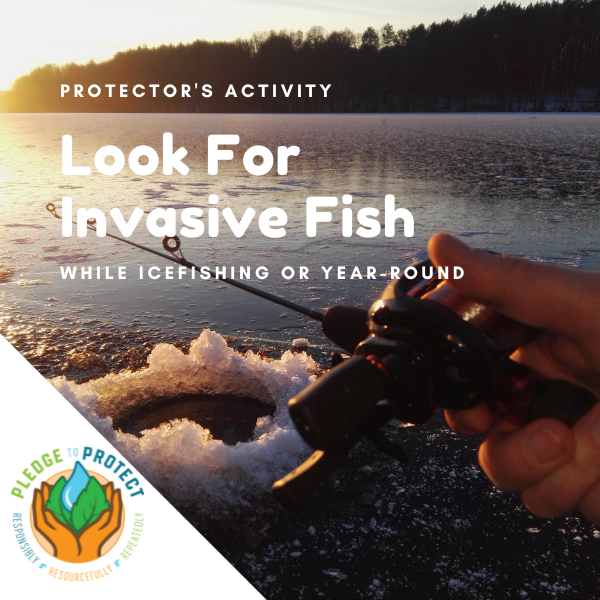- Learn to recognize invasive fish threatening the St. Lawrence Eastern Lake Ontario region.
- Keep an eye out for invasive fish while fishing and enjoying the water.
- Report sightings of invasive fish you encounter to iMapInvasives.org.
- Dispose of unwanted aquarium animals and plants in the garbage, not in waterbodies.
- Use local bait and dispose of unused bait in the trash or above the waterline on dry land.
- Clean, drain and dry your boat and equipment.
Northern snakehead and tench are two invasive fish that are not yet known to be established in the St. Lawrence Eastern Lake Ontario region but could easily be spread to the area.
You can help by keeping an eye out for these species and reporting sightings.

Northern snakehead (Channa argus) is a predatory fish that when established can have a significant impact on aquatic food webs, native fish populations, as well as the fishing industry.
Native bowfin and burbot can be easily confused with northern snakehead. However, snakehead has a much longer anal fin than the bowfin, and snakehead has a continuous dorsal fin whereas the burbot has a double dorsal fin. and these native fish.
People can help stop the spread of northern snakeheads by not using them as bait and by draining and cleaning the water-containing compartments on their boats.
If you believe you have caught a northern snakehead:
- DO NOT RELEASE IT.
- Kill it immediately (remember, it can survive on land) and freeze it.
- If possible, take pictures of the fish, including close ups of its mouth, fins and tail.
- Note where it was caught (waterbody, landmarks or GPS coordinates).
- Report it to your regional NYS DEC fisheries office or to NYS DEC’s Invasive Species Bureau at isinfo@dec.ny.gov or (518) 402-9425.
- You can also submit a report through iMapinvasives.

Tench (Tinca tinca) are invasive fish in the minnow/carp family. They are generalist predators and have the ability to diminish aquatic food-webs, increase water turbidity, and introduce non-native parasites.
Tench can grow up to 18 inches in length and weigh up to 10-12 pounds. They have dark olive to pale golden coloring with a white bronzy belly and bright reddish-orange colored eyes. Their fins are distinctively rounded and dark-colored with no spines.
If you believe you have caught a tench:
- Note your location.
- Do not release the specimen, put it on ice.
- Take close-up photos of the specimen.
- Notify the SLELO PRISM Program Manager Rob Williams at rwilliams@tnc.org
Did you enjoy this blog post? Take our Pledge to Protect and get monthly emails showcasing actions you can take to protect your favorite hiking trails, paddleways, forests, garden, and community from the impacts of invasive species!
Take the Pledge to Protect
The Pledge-to-Protect is a fun, positive, inviting, engaging and rewarding way to participate in invasive species prevention and management.
|
|



